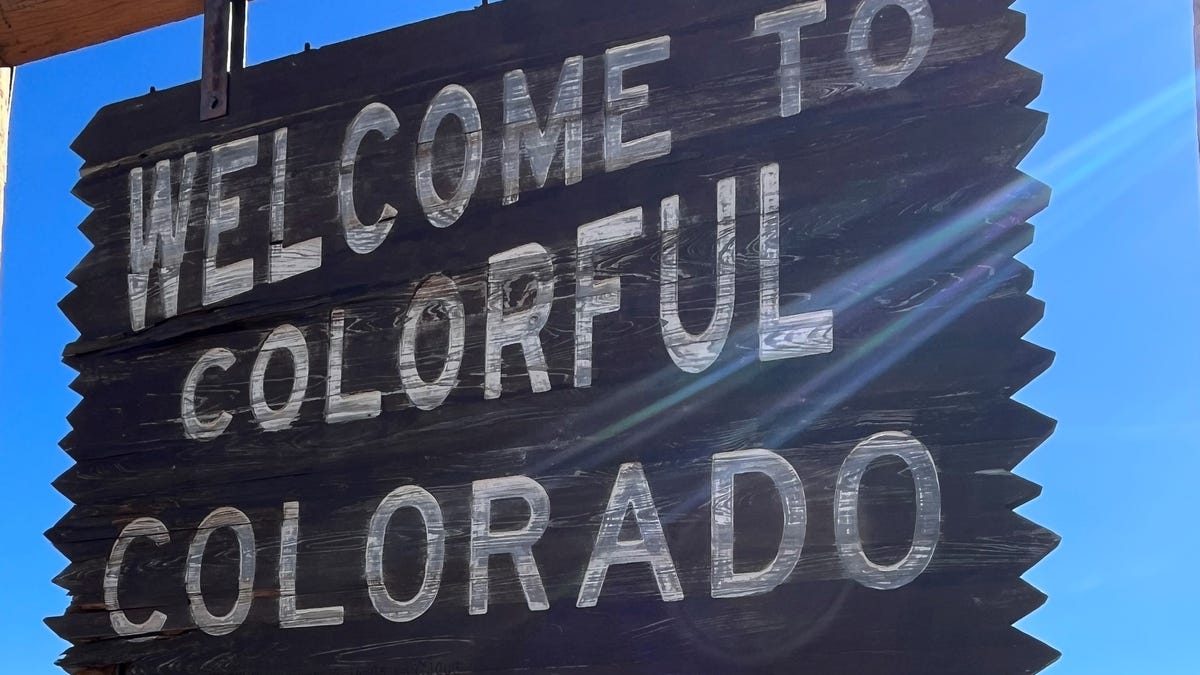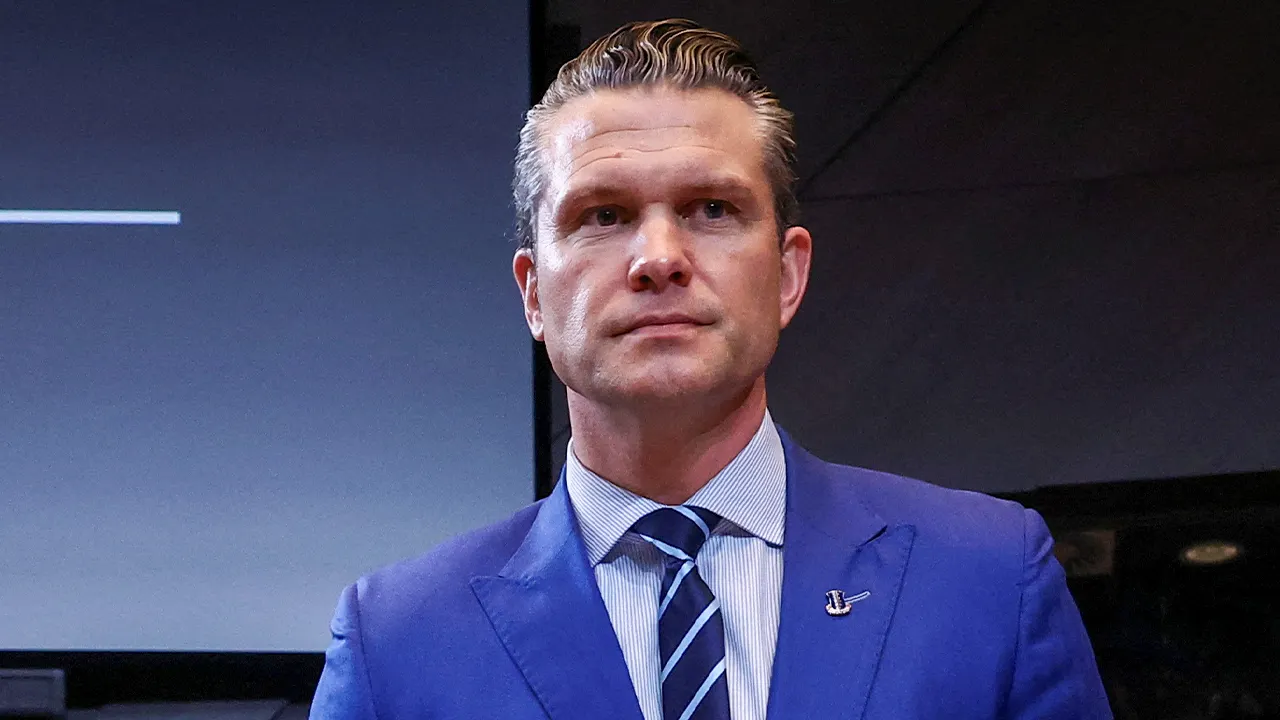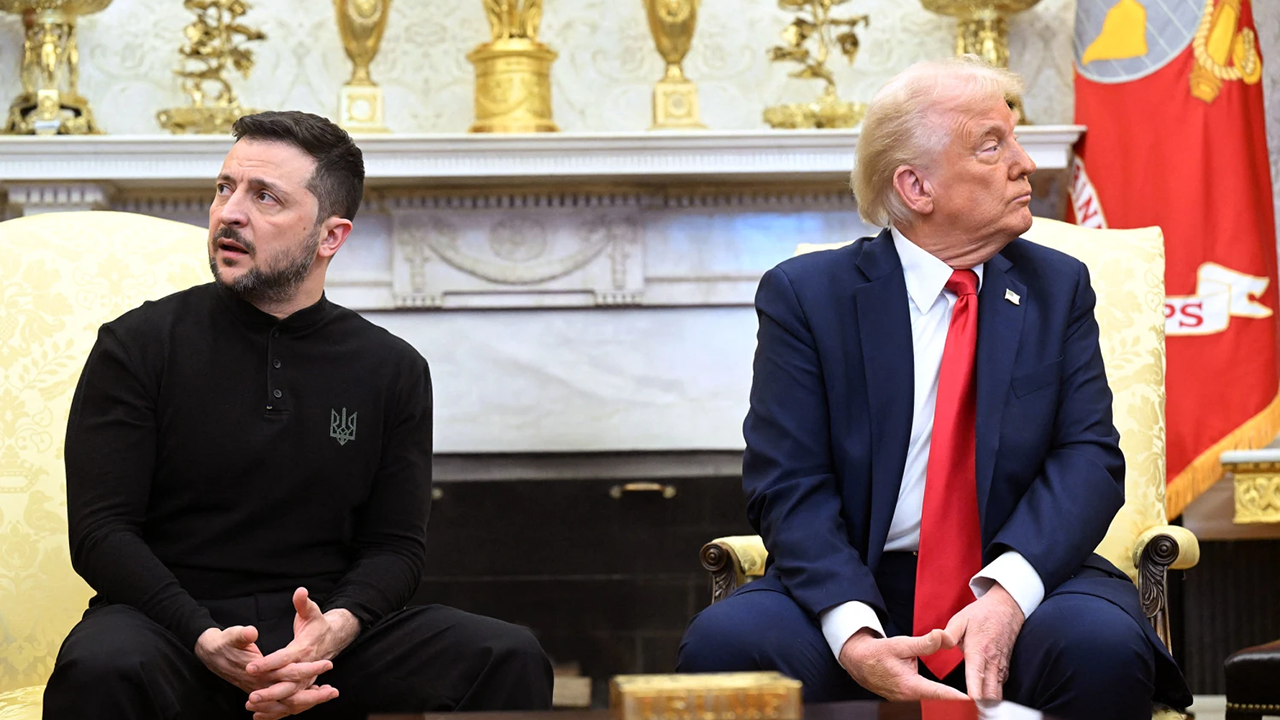Austin, TX
Concordia University Texas celebrates its first music education graduate
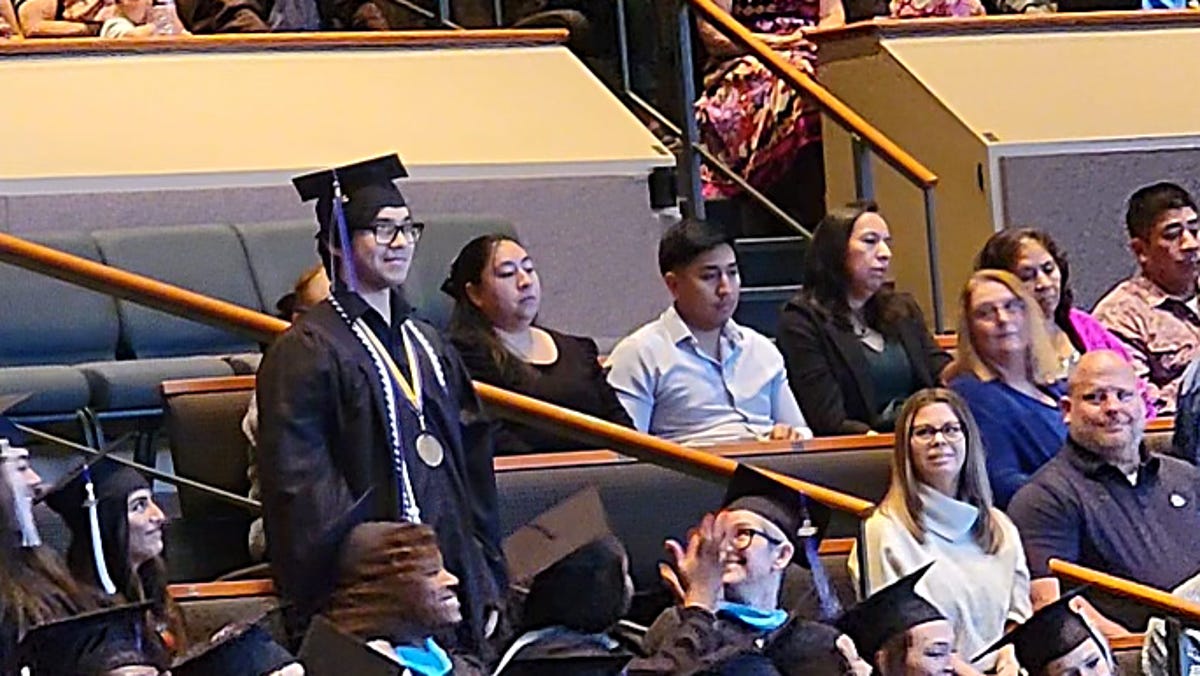
“Mr. C! Mr. C!” Liberty Middle School students called in the hallway when they saw Ramon Cisneros, a Concordia University Texas student who was teaching his first class. To the children, Cisneros was not just a college student; he was their teacher.
Cisneros became Concordia University Texas’ first music education graduate in December. In the fall, he had begun teaching band to a class of sixth grade students as part of his work to gain professional experience.
During a Zoom call from his classroom on the last day of class at the middle school, he told the American-Statesman it was a sad day for him.
“Students here at the middle school saying goodbye to me, and we’re just exchanging our last day together,” he said.
When Cisneros arrived at the school five months earlier, students were barely taking the plastic off their saxophones. Some had never played. He had taught private piano lessons before, but never a full class.
The task was challenging, he said, but also rewarding. He was surprised by how well he connected with the students, and he said the fulfillment from sharing his passion was gratifying.
“I saw them (from) barely touching that instrument to playing in a concert about a week ago,” he said. “That’s pretty cool.
“Even if it’s a simple song, you were the one that gave them that ability to do that. Once you see it, it’s kind of like your own reward in a way.”
In recognition of his passion and work, Cisneros, along with 44 other Texas students, received the Collegiate Music Educator Award from the Texas Music Educators Association.
“Award recipients represent the finest and most dedicated future music educators in Texas,” Robert Floyd, the executive director of the association, told the Statesman in a statement. “It is truly an honor to be nominated by one’s college or university.”
Whitney Crowley, the Concordia music department chair and Cisneros’ mentor, nominated him for the award. She said he “pioneered” the music education major for the university, all while teaching middle school students.
“He’s able to take what he loves and pass that on to students,” Crowley said. “He’s gone above and beyond, in addition to being our very first (music education graduate), in being an amazing role model for all these younger musicians that are going to follow him.”
Cisneros grew up in Brownsville. At 4 years old, he would play songs on his toy piano. When he heard Beethoven for the first time, his love for music solidified.
“The beautiful classical music just kind of touched my soul when I was a kid,” he said.
Cisneros transferred to Concordia University Texas from Austin Community College. He initially was hesitant to pursue a music degree and instead tried different fields.
“There’s always a choice that you have to make when you get out of high school,” he said. “It’s like, OK, do you want money, or do you want to pursue the thing that you really want to pursue?”
He couldn’t get music out of his mind. His wife, another Concordia graduate, introduced him to the school, and he transferred during the COVID-19 pandemic. Pursuing education with music became his compromise, his goal.
“I always loved that there was always a room available with a piano or an open room where I was able to just practice” at Concordia, he said.
At his commencement ceremony, Concordia’s president asked him to stand up to be recognized as the school’s first music graduate. His family and his wife’s family — many of them educators ― came to the graduation to celebrate him.
With his degree in hand, he plans to substitute teach until full-time positions open for the next school year. He said his dream career is to be a professor in music technology, composition and audio engineering.
He said his advice for students is to follow their passions.
“Trust yourself; trust your instincts; something is going to happen,” he said. “You’re always going to find a way.”

Austin, TX
Thursday is the deadline to register to vote in the May local elections. Here's what to know.

Thursday is the deadline to register to vote in Texas for the May 3 election. May elections are a time for local government bodies, like cities and school districts, to put issues on the ballot.
In the Austin area, some voters will decide on city council positions, school board races, money for roads and more.
You can find sample ballots on your county’s election website. Here are a few:
You can check to see if you’re registered to vote here. If you’re not, here’s what you need to know.
What do I need to do to vote?
You must be registered by Thursday in the county you live in to vote in the May 3 election.
To be eligible to register, you must:
- be a U.S. citizen
- be a resident of the county you are applying to vote in
- be at least 18 years old by Election Day
- not have been declared mentally incapacitated by a court
- not be a convicted felon (though you may be eligible if you were pardoned or completed your sentence, probation and parole)
In Texas, you cannot register to vote online — unless you are renewing, replacing or updating your Texas driver’s license or ID on the Department of Public Safety website.
You can submit a voter registration application by mail. Just fill out this form, print, sign and mail it to your county elections office. Your application must be postmarked by Thursday for the May 3 election.
You can also visit your county voter registrar or elections office to submit your application in person.
Find some local offices here:
Do I need to renew my voter registration?
If you’ve changed your name or moved within Texas — especially if you’ve moved to a different county — you can update your voter registration information online. You can also submit an updated physical application before the deadline.
What kind of ID will I need to register or vote?
To register to vote, you can use your Texas driver’s license or Texas personal ID number issued by DPS. If you don’t have either of those, you can use the last four digits of your Social Security number.
When you head to the polls, you will need to present one of these valid forms of photo ID:
- Texas driver’s license (DPS issued)
- Texas election identification certificate (DPS issued)
- Texas personal ID card (DPS issued)
- Texas handgun license (DPS issued)
- U.S. military photo ID
- U.S. citizenship certificate with photo
- U.S. passport (book or card)
You can still use your ID to vote if it expired within the last four years. If you are 70 or older, you can use it regardless of when it expired.
If you couldn’t get one of the above forms of ID, you can use a supporting form of identification like a bank statement or utility bill. But you must sign a document saying you had a reasonable impediment to getting a valid photo ID — like lack of transportation, work schedule, illness or family responsibilities.
Important dates
- April 3 — Deadline to register to vote or update your address
- April 22 — Early voting begins
- April 22 — Deadline to apply for a ballot by mail
- April 29 — Early voting ends
- May 3 — Election Day
Austin, TX
March Madness: What did TCU say about Texas women’s basketball on Sunday?
BIRMINGHAM, Ala. — On Monday night, the Texas women’s basketball team and TCU will meet at Legacy Arena during the fourth round of the NCAA Tournament.
Texas and TCU didn’t play this season, but the two teams are quite familiar with each other. Texas was TCU’s conference rival in the Big 12 from 2012-24, and TCU center Sedona Prince is a Liberty Hill native who played at UT during the 2018-19 season.
The game will tip off just after 6 p.m. at Legacy Arena in Birmingham on ESPN. Those in the Austin area can listen on the radio, via 103.1 FM.
The winner moves on to play either South Carolina or Duke in the Final Four.
Here is everything that TCU said Sunday about Texas during pregame news conferences for Prince, head coach Mark Campbell and senior guards Madison Conner and Hailey Van Lith:
TCU vs Texas: Frogs’ first impressions about the Longhorns
Campbell: “There’s not many holes. They’re incredible. They have size and great post play. They have depth, really athletic, have one of the best point guards in college basketball. And they’re a 1 seed for a reason. So we’re going to have to play a heck of a game and Coach Vic and his staff obviously do a tremendous job with their system, style of play.”
Elite Eight matchups: TCU thoughts on Texas post players Taylor Jones and Kyla Oldacre
Campbell: “Oh, incredible. Taylor Jones is an athletic, strong, versatile post player and the depth they have at the post position, they got a lot of big bodies that they can throw at you. They’re a load. They’re a load down there. They wear on you.”
TCU vs Texas: Horned Frogs’ familiarity with Longhorns
Campbell: “Yeah, Coach Schaefer, his system and what they do, he doesn’t really change it. He’s really good at it. It helps to be familiar with his system but we have a whole new team and obviously they have new players. So you can look at some film a little bit from last year, but really you’re just scrubbing this year’s team and trying to figure out what we gotta do to have a chance to beat these guys.”
Texas vs TCU: Sedona Prince’s much-publicized departure from Texas
Prince: “I don’t think it I really realized how much it affected me until probably this year, to be honest. But, yeah, I mean, I’m from Austin, raised in Austin, committed in eighth grade. Texas was my dream school, 40 minutes from where I grew up, and my family. I won’t go into details, because it’s a long time ago, and there are things if you want to go research it but — yeah, I mean, it was a very, very difficult year for me as a young woman, as a young player to be thinking I was a part of a family and to be treated in the way that I was.
“So I held a lot in my heart and my soul that I didn’t know I was carrying around for a long time, and you don’t really realize how much trauma can affect you until all of the sudden you’re hit with a wall and then it’s like, oh man, this has been, you know — this has been weighing me down for a very long time.
“So the staff isn’t there, but I have so much respect for Vic and what he’s done with the program. I think he’s an amazing coach. I have no hard feelings. I’ve healed from it. It’s shaped me into a better person. I’m grateful for that and where it led me to go to Oregon, to leave college and come here. There is nothing else that could have led me here and taught me so many valuable lessons and shaped me into the person I am today without going through those atrocities that I went through.”
NCAA Tournament: TCU’s Hailey Van Lith beating Texas in 2023 while playing at Louisville
Van Lith: “What I remember — mostly we didn’t get to host that year, we had to go into Texas. They were supposed to beat us by a lot. And, you know, it was kind of like Louisville DNA came out there where we scrapped out on defense, and I think we ended up winning by double digits at least.
“But it was a great game. We played really well. I think, you know, Rori (Harmon) might have got hurt at some point in that game, she didn’t play the whole game. But I mean, all I remember — it was a great win for us. We pulled off an upset on their home court, which was huge.”
TCU vs Texas: What about the Longhorns’ current backcourt?
Van Lith: “I think, again, they’re elite defensively, their backcourt, they have a lot of athletic, strong guards who can do different things. They’re versatile, they have a lot of different personnel. So scout — like personnel and knowing the scout will be huge, and at the end of the day the theme of the NCAA Tournament is toughness. So they’re going to be tough. We know they’re going to be tough. They have that DNA in them, so we’re going to have to match that.”
Follow the American-Statesman on Facebook and X for more. Your subscription makes work like this possible. Access all of our best content with this tremendous offer.
Austin, TX
From the Statesman archives: How Mueller neighborhood streets got their Austin names
Tooling through Mueller, have you ever wondered how the streets of this 21st-century neighborhood, such as Camacho, Taniguchi and Scarbrough, earned their names?
We offer partial historical answers in today’s column.
By way of background, a stroll through the American-Statesman archives reveals several strata of history about Austin street names.
- 1839: The original map of Austin, drawn by master surveyor L.J. Pilie, reveals three types of street names: 1) north-south streets named after Texas rivers, which is still the case; 2) east-west streets named after Texas trees (changed to numerals in 1886, but a change adopted slowly); 3) other names, including the grand-sounding Congress Avenue for the wide street that bisected the new capital of the Texas Republic, as well as names that represented different types of boundaries (East, West, Water).
- 1886: City leaders replaced the tree names with numbered streets on Sept. 21, 1886. Edwin Waller, charged with hacking the city out of the wilderness, had actually preferred numbers for east-west streets, as a July 11, 1839, letter to Texas President Mirabeau B. Lamar proves. Some maps from the late 19th century and early 20th century show both numbers and tree names for the same streets.
- Late 1800s-early 1900s: As Austin slipped outside of the downtown grid and the garden plots to the east, more streets were named after early Texas leaders and Austin residents (Lamar Boulevard, Barton Springs Road); or nearby towns already named after early Texans (Burnet Road, Cameron Road); local landmarks (Asylum Road, later renamed Guadalupe Street); or nearby communities (Dessau Road, Old Fredericksburg Road, later renamed South Lamar Boulevard).
- Late 1900s: Three major trends: 1) New freeways named by federal, state or city transportation entities (at times confusing, such as the doubly dubbed MoPac, named for the parallel Missouri Pacific railroad, but also known as Texas Loop 1); 2) new suburban streets named by developers after faraway, fanciful or imaginary people and places, or conversely, actual local geography; and 3) throughways, some later expanded, named after local politicians (Ben White Boulevard) or highway officials (Ed Bluestein Boulevard).
- 2000: The new Mueller redevelopment provided a singular opportunity to name a lot of new streets under the scrutiny of a public-private project. The plateau east of Interstate 35 had already been associated with several key historical events — the scalping of settler Josiah Wilbarger in 1833, the purchase of land by twice-enslaved Newton Isaac Collins in 1872, and the opening of the city’s first civilian airport there in 1930. It was named after City Council Member Robert Mueller (pronounced Miller), who died in office in 1927.
Austinites revved up efforts to move Mueller Municipal Airport, located a few miles from downtown, in 1984. A leading candidate for a replacement was land near Manor, which helps explain some of the industrial, commercial, office and hotel space built on speculation during this period near Interstate 35 and U.S. 290. The city, however, chose the federal offer of Bergstrom Air Force Base in Del Valle. It became Austin-Bergstrom International Airport, which opened in 1999.
At that point, what to do with the hundreds of acres that had been the main footprint of the Mueller Airport?
The city of Austin entered into a partnership with Catellus Development Corp. to create a neighborhood based on ideas associated with “new urbanism.” Those ideas included urban-like density, walkable streets, sensitive landscaping and a mix of resident incomes. Also clustered around the former airport were movie studios, a children’s hospital, a children’s museum and Rathgeber Village, home to several social service groups.
Meanwhile, a committee was convened to choose Mueller street names from the names of significant Austin figures, some of them not well known, especially to newcomers.
Here are just a few of those street names (I’ll return to the subject in future “From the Archives” columns):
- Zach Scott Street: The movie and stage actor Zachary Scott (1914-1965), son of a prominent Austin family that included Dr. Zachary Scott (1880-1964), is perhaps best remembered for film roles in “Mildred Pierce” and “The Southerner.” He is the namesake for Zach Theatre, formerly known as Zachary Scott Theatre, the city’s largest resident theater company.
- Barbara Jordan Boulevard: The former U.S. congresswoman’s early life and career are associated with Houston, but the fearless defender of the Constitution spent her later years in Austin as a professor at the University of Texas LBJ School of Public Affairs. Two large statues of Jordan (1936-1996) can be found in the city, one on the University of Texas campus, the other at Austin-Bergstrom.
- Camacho Street: Lorraine Fuentes “Grandma” Castro Camacho (1917-1999) worked in food service for the Austin school district, but more than that, she was a volunteer and community organizer who took care of the youth in the Holly Street neighborhood for decades. Mother of beloved community historian Danny Camacho, she lent her name to the Lorraine “Grandma” Camacho Activity Center.
- Taniguchi Street: A native of Japan, Isamu Taniguchi (1897-1992) immigrated to the U.S. as a teen. During World War II, he was forced into an internment camp at Crystal City, about 115 miles southwest of San Antonio, where he worked in the carpentry shop and maintained gardens. He retired to Austin in 1967, where his son and grandson became prominent architects and educators. In gratitude to the city, he almost single-handedly created the Isamu Taniguchi Japanese Garden at the Zilker Botanical Garden.
- Scarbrough Street: Named after Lemuel Scarbrough (1889-1965), part of at least four generations of his family who turned a farmer-oriented general store into the city’s most glamorous and comprehensive department store. Like his relatives, Lemuel became a philanthropist and civic leader. The Scarbrough Building, including its art deco additions, still commands the southwest corner of Congress Avenue and Sixth Street.
- Emma Long Street: While Austin city government was led by a club of white businessmen for more than a century, Emma Long (1912-2011), an American-Statesman reporter, broke that mold in 1948 by becoming the first woman elected to the City Council. Long was unusually progressive for her time and promoted many of the changes that redefined Austin during the 1950s and ’60s. She reactivated the Austin Parks and Recreation Department and is the namesake for Emma Long Metropolitan Park in Northwest Austin.
-

 News1 week ago
News1 week agoHow a Major Democratic Law Firm Ended Up Bowing to Trump
-

 Education1 week ago
Education1 week agoICE Tells a Cornell Student Activist to Turn Himself In
-
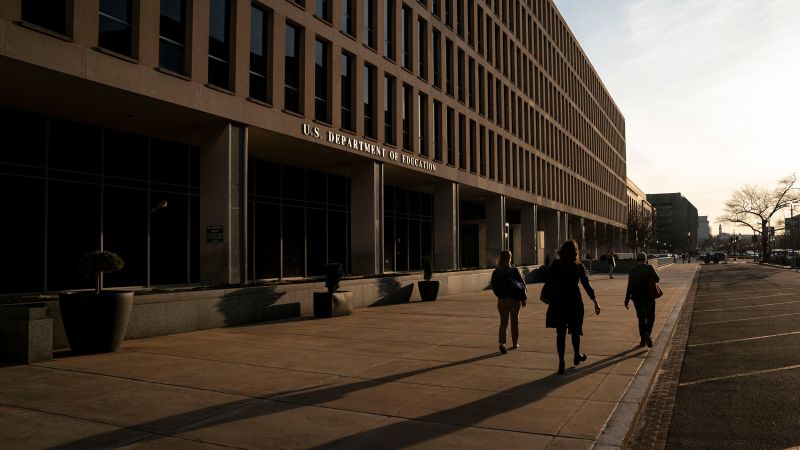
 News1 week ago
News1 week agoDismantling the Department of Education will strip resources from disabled children, parents and advocates say | CNN
-

 News6 days ago
News6 days agoWashington Bends to RFK Jr.’s ‘MAHA’ Agenda on Measles, Baby Formula and French Fries
-

 Movie Reviews1 week ago
Movie Reviews1 week agoFilm Review: Rachel Zegler is the Best Part of an Otherwise Dull Remake of ‘Snow White’ – Awards Radar
-

 News5 days ago
News5 days agoTrump Is Trying to Gain More Power Over Elections. Is His Effort Legal?
-
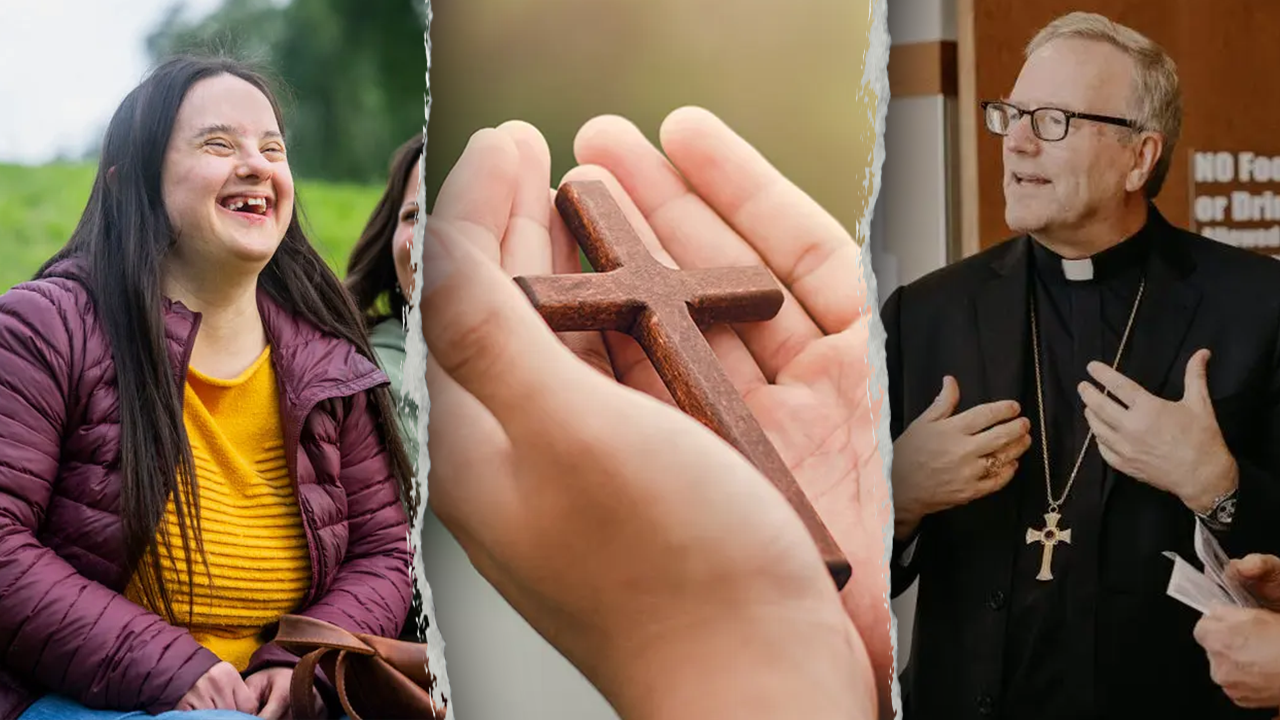
 Politics1 week ago
Politics1 week agoEXCLUSIVE: Groundbreaking new prayer book designed for demographic most targeted for abortion
-

 News1 week ago
News1 week agoShooting at Park in New Mexico Leaves at At Least 3 Dead and 16 Injured





